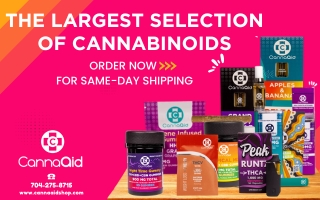
It’s easy to jump on the bandwagon with hot selling products. Kratom, vapes and CBD are perfect examples of popular products that practically sell themselves these days with much thanks to feverous publicity in news headlines and social media posts.
A quick ride to profitville might be an attractive notion. But following trends for the sake of being trendy isn’t always a practical longterm strategy. The challenge is, when do you know when something is a passing trend, and when it’s something bigger? More importantly, how well are these products meeting the needs of your customers and how do they fit in with the focus of your business. The answers to these questions will guide you in a more profitable direction.
Is it believable for your brand?
What so many business owners fail to understand is that everything they do is relative to their brand. Just because your competitor is selling a specific product doesn’t mean that it fits with your culture or mission. Nothing in the world of business is a “one size fits all” solution.
Is it helpful for your customer?
Although your brand is a fantastic guide, a compass that points to the core of your business, another signpost to consider is whether a product is something that your customers truly need. There’s a big difference between “want” and “need.” Something may be the product of the day and that they thing to have — you’re customers may want it, but just how badly do they need it? How does it benefit your customer? How is it going to boost the end-user experience? If you decide that the popularity of a product is a one-and-done scenario, you should ask yourself wether it’s worth making a couple of bucks on the rush or whether you’re better off building a loyal customer base on proven products.

Lets assume that you’re going to place your bet on a popular product category being more than a trend. Before you jump in with both feet, remember that so are a lot of others — retailers and vendors alike. There are going to be a lot of product choices available in the initial rush to grab consumer dollars, but even so, it’s important to consider what impact the product you put on the shelf will have on your customers and ultimately your own business.
When selecting products ask yourself: Is the product coming from a reputable vendor with a proven track record or a fly-by-night company in it just to make a buck? Is the product backed by a warranty and proven safe by third-party testing? How is the supply —- does the vendor have enough product available so that when you’re ready to order, you won’t lose customers to your competition because you’ve had to tell them the thing they want is out of stock?
The most important thing to keep in mind about trends is that they come and go. If you’re planning to be in business for the long haul, align yourself with products that represent you and your customers the best.












